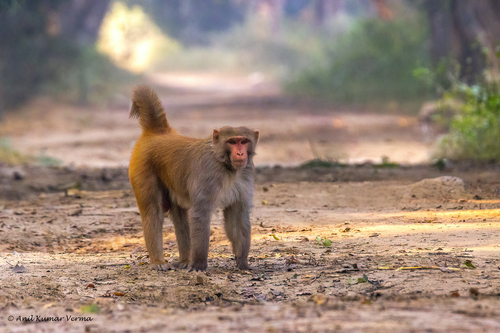
Rhesus macaque
The rhesus macaque (Macaca mulatta) thrives in diverse habitats, showcasing remarkable adaptability and intelligence. Known for their social complexity, these primates play a crucial ecological role and are widely studied in science due to their genetic similarity to humans. Their vibrant social structures and interactions make them fascinating subjects of observation.
20-40 years
Lifespan
Brown, Black, Tan, Dark, Light, Grey, Light-Brown
Color
Medium
Aggression
Least Concern
Conservation Status
Unknown
Population Trend
Characteristics
Macaca mulatta, known as the rhesus macaque, is a highly adaptable primate found across varied habitats from forests to urban areas in South and Southeast Asia. These social animals live in large groups, exhibiting complex behaviors and a strict hierarchical structure. Notable for their reddish-brown fur and expressive faces, they are vital in ecological studies and biomedical research.
Distribution Range of the Rhesus macaque
Macaca mulatta, commonly known as the rhesus macaque, is native to a broad region in South, Central, and Southeast Asia. Its geographical distribution includes countries such as India, Bangladesh, Pakistan, Nepal, Bhutan, Vietnam, Thailand, Myanmar, Laos, and southern China. The species is notably widespread across the Indian subcontinent and can be found up to altitudes of 3000 meters in the Himalayas.
Rhesus macaque's Habitat
Environmental Conditions
Rhesus macaques inhabit a diverse range of environments, from tropical and subtropical forests to temperate deciduous forests. They are highly adaptable and can thrive in various climatic conditions, including hot, arid regions and colder mountainous areas. They often inhabit areas near water bodies and are known to occupy human-altered landscapes such as urban and rural areas, agricultural fields, and temple grounds.
Ecological Niche
The rhesus macaque is an omnivorous and highly opportunistic forager, feeding on a wide variety of foods including fruits, seeds, leaves, roots, insects, and small animals. This dietary flexibility allows them to adapt to different ecological niches. They are diurnal and arboreal, often moving in large, social groups. Their ability to live in proximity to humans has facilitated their spread across a wide range of habitats, often leading to human-wildlife conflict.
Copyright @ Nature Style Limited. All Rights Reserved.
 English
English